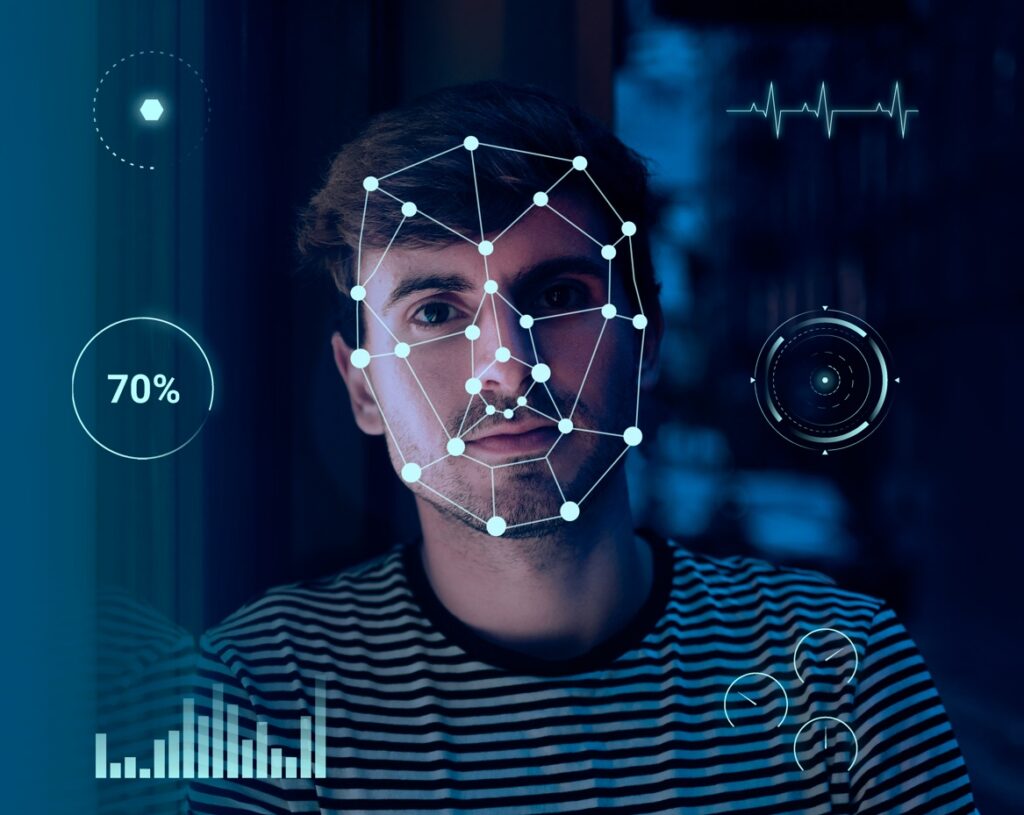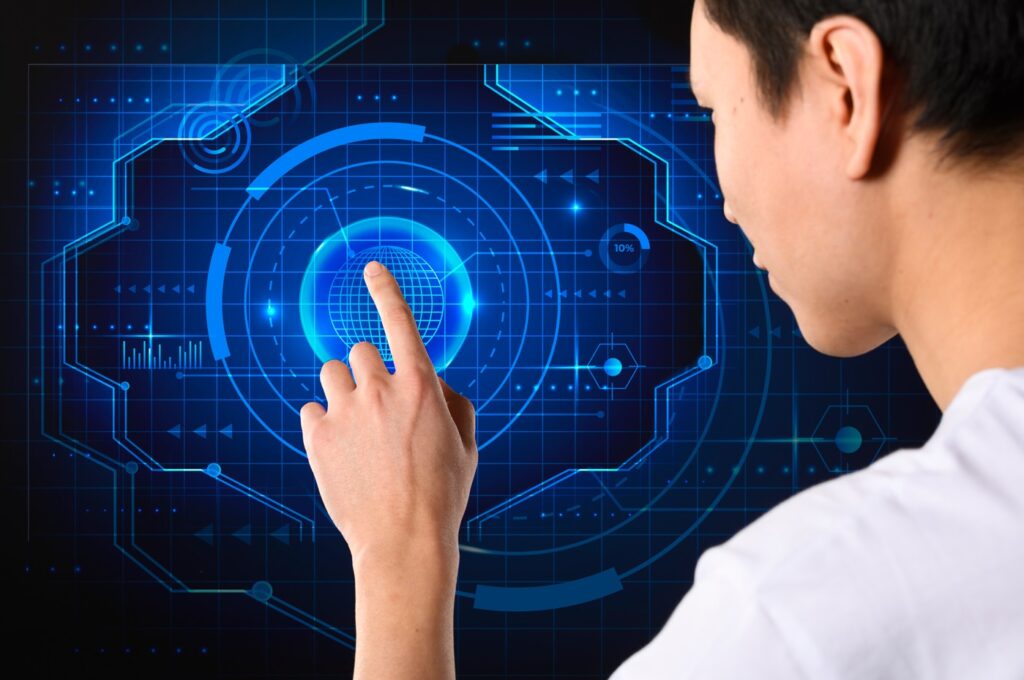Technological advancement and user-friendly interfaces are the primary concerns of organizations to survive in this age of digitization. The significance of security protocols is growing to protect the landscape from cyber attacks.
Imposters remain active, using various strategies for their illicit activities. Face recognition methods serve digital processing organizations with enhanced security—and quick identity verification services.
Face liveness detection helps eliminate deep fakes and enables firms to utilize automatic artificial intelligence mechanisms to reduce the manual effort of document checking.
Quick Overview of Face Authentication Technology

Face authentication technology secures digitally controlled work and aims to find fake images and IDs. Now, businesses onboard partners and customers remotely. They use online methods for digital services such as user registration and business partnerships.
It is a computerized method to stop crimes like scams and money laundering. Deep learning technology is the baseline of facial recognition technology. It analyzes biological features and verifies user legitimacy.
It interrelates information obtained during live interviews with data provided on identity document photos. Liveness detection enables firms to utilize an extra security layer for identity verification.
Biometric Vs. Two Factor Authentication
Two-factor authentication is a security system that includes distinct processes such as passwords and PIN codes. It also includes one-time passwords for multi-layered security.
It is traditionally used, but now, imposters bypass this through phishing and data breaches. Biometric face liveness verification eliminates the risk of a data breach by allowing real-time user facial identification.
It works through physical traits and helps to detect fraud and deep fakes through sharp artificial intelligence detectors.
Use Cases of Liveness Detection Technology
Source: Canva Pro
Liveness detection is pivotal in verifying user identities through distinct biological features, ensuring reliable identity confirmation and bolstering security against fraudulent activities.
By leveraging this technology, enterprises can implement multi-layered security measures that deter criminals from using fake IDs or tampered documents to gain access to illegal purposes such as money laundering and financial terrorism.
Face liveness verification is instrumental in providing significant outcomes in the following ways:
- Enhanced Security: Face liveness detection offers an additional layer of security, safeguarding against unauthorized access and fraudulent attempts.
- Fraud Prevention: Liveness detection helps prevent fraudulent activities, including identity theft and document forgery, by verifying the authenticity of user identities.
- Compliance with Regulations: Many industries, particularly those in finance and banking, must adhere to strict regulatory requirements for identity verification.
Face liveness verification aids in compliance with these regulations by ensuring robust authentication processes. - Improved User Experience: While enhancing security, liveness detection also contributes to a seamless user experience by speeding up the identity verification process and reducing the need for manual work.
Secure Digital Payments
Facial recognition technology revolutionizes digital payment security by analyzing live facial data, empowering banks to enhance the protection of digital payment transfers.
As companies increasingly adopt digital methods for fund transfers and service delivery, there is a heightened risk of criminals exploiting weak security systems to gain unauthorized access.
Biometric solutions, however, provide robust access control mechanisms that stop fraudsters and offer authentic modes for app opening and transfer confirmation.
Given the susceptibility of digital payments to criminal attacks due to weak security measures, there is a pressing need to combat financial terrorism and money laundering by fortifying security protocols and implementing biometric authentication methods.
By integrating facial recognition technology, banks and businesses can significantly boost the security of digital payment processes, thereby safeguarding against fraudulent activities and ensuring the integrity of financial transactions.
Access Control

Manual checking and traditional password methods are increasingly being deemed outdated and inadequate for combating phishing attacks and data breaches.
These methods allow fake users to access digital systems without permission, bypass security measures, and access private data.
In contrast, automatic face verification technology significantly advances digital security, leveraging unique facial traits that are virtually impossible to replicate.
This technology employs biometric authentication to offer an additional layer of security. It effectively prevents criminal attacks and eliminates vulnerabilities associated with passwords and knowledge-based security measures.
With automatic face verification, organizations can significantly enhance their security posture, safeguarding against sophisticated cyber threats and ensuring the integrity of their digital processing systems.
Data Protection
Face liveness detection is critical in enhancing data security and aiding companies in electronic record management.
By implementing this technology, enterprises can establish robust digital record-keeping systems, which play a pivotal role in facilitating criminal investigations conducted by law enforcement agencies.
Biometric face verification emerges as a highly secure method for protecting user data from cybercriminals, mitigating the risks associated with unauthorized access and identity theft.
In addition to biometric measures, companies often employ knowledge-based security measures, such as security questions based on personal information like sibling names, to strengthen their security protocols.
This multi-layered approach to data security helps organizations safeguard sensitive information and maintain the integrity of their operations in the face of evolving cybersecurity threats.
Successful Service Deliveries
For companies operating on a global scale and onboarding users remotely, reliable identity verification methods are paramount.
Biometric face verification emerges as a highly effective solution, offering automatic processes and multi-layered security protocols to ensure that only real people can join.
By employing advanced algorithms, biometric face verification can detect and expose individuals attempting to use deep fakes or counterfeit images, thereby enhancing the authenticity of the onboarding process.
Moreover, implementing face verification enables organizations to adopt heightened security measures, ensuring that only authorized entities gain access to their services.
This, in turn, contributes to the seamless delivery of services and enhances overall customer satisfaction. The e-commerce sector requires biometric security measures to secure digital business processing and eliminate criminal activities.
Attendance Monitoring in Different Institutions
Many institutes and companies use biometric systems to track their employees’ attendance automatically. It reduces the need to hire multiple users and the workload for attendance checking. Institutes using face verification for attendance monitoring may include:
Schools, colleges, and universities use biometric security methods to protect data and monitor attendance. Corporate sectors use face liveness verification technology to monitor employees’ attendance and avoid complications in manual, biased processes.
It helps to eliminate proxies and manage fair attendance records.
Law enforcement agencies save mugshots and sanctions records to help organizations prevent fraud.
Face verification enables public cameras to capture specific individuals and track criminals through automated ID verification solutions.
FAQs on Face Liveness Detection
What is Face Liveness Detection?
Face liveness detection is a technology used in biometric systems to determine whether the face being presented for authentication is real and alive rather than a photograph, video, or mask.
It ensures the user is physically present during the verification process, adding an extra layer of security to prevent spoofing attacks.
Where is Face Liveness Detection Commonly Used?
Face liveness detection is widely used in several critical areas to enhance security and convenience. Digital payments ensure secure transactions by verifying that the payer is physically present, thus preventing fraud.
For access control, it restricts entry to sensitive locations or systems by confirming the live presence of authorized users. Remote onboarding facilitates the verification of new users or employees remotely, ensuring that only legitimate individuals complete the registration process.
Additionally, attendance monitoring accurately tracks attendance by verifying the presence of individuals, thus eliminating the chances of proxy attendance and improving operational efficiency.
What is the Difference Between Face Liveness Detection and Traditional Authentication?
Face liveness detection and traditional authentication fundamentally differ in their identity verification approaches. Face liveness detection relies on biometric technology to ensure that the person being authenticated is not only a match to stored biometric data but also physically present and alive.
This method analyzes unique physical traits and live interactions, making it highly resistant to faking. In contrast, traditional authentication typically involves using passwords, PINs, or physical tokens, which depend on knowledge or possession and can be compromised through phishing or theft.
As a result, face liveness detection offers a more secure and user-friendly alternative by eliminating the need for such static credentials and reducing the risk of unauthorized access.
Summing Up
Online facial detection and recognition technology enables digital payments and online service deliveries.
This technology effectively identifies and authenticates individuals by leveraging automated algorithms, mitigating the risks associated with deep fakes and faking attacks.
Organizations have increasingly adopted biometric liveness detection for face recognition, replacing traditional two-factor verification methods.
This not only enhances security by safeguarding digital payments against financial terrorism but also improves the user experience for banking services.
Moreover, implementing online face verification methods represents a significant outcome of digitization efforts to enhance enterprise security and optimize workload management.
Overall, the integration of facial recognition technology underscores its critical importance in advancing digital security measures and streamlining online service operations.






